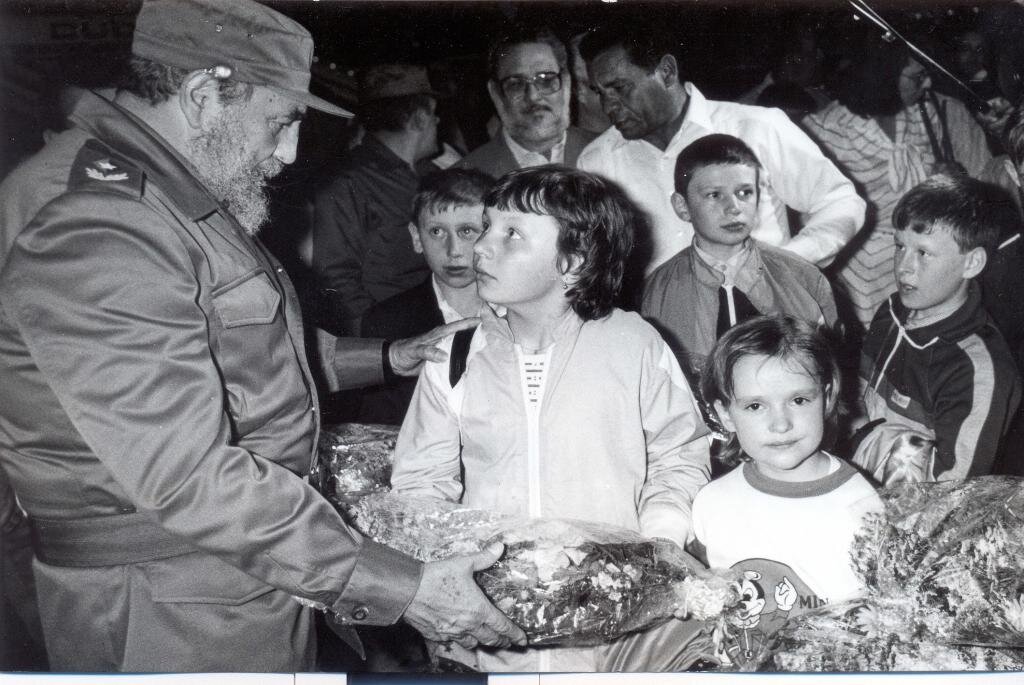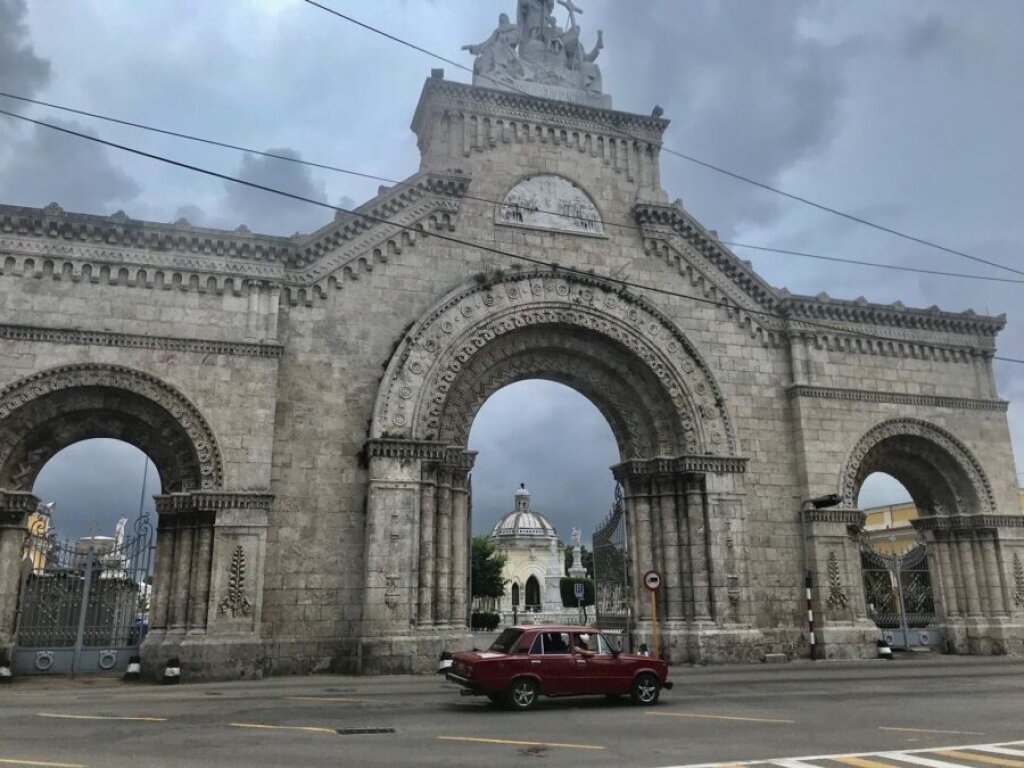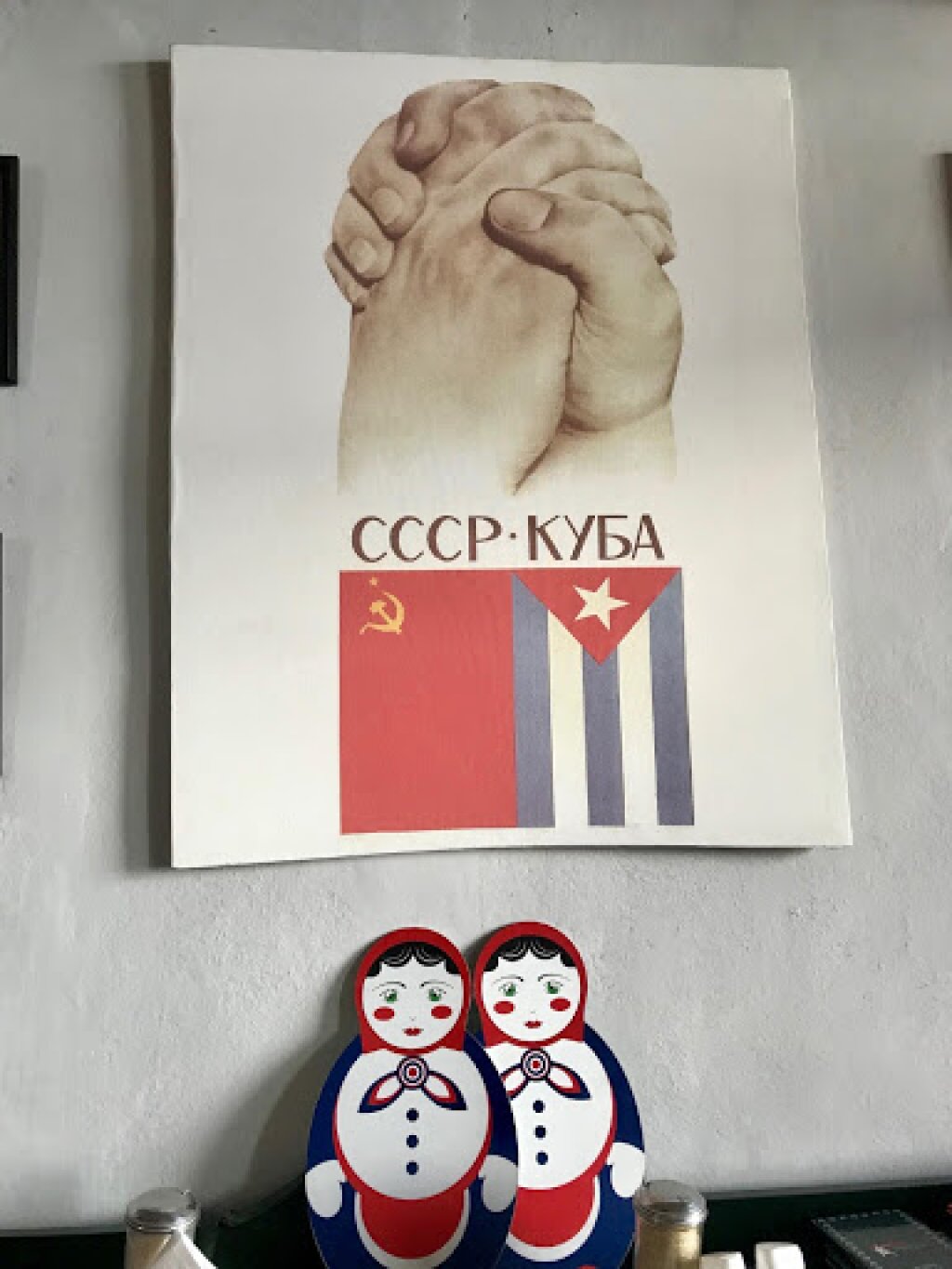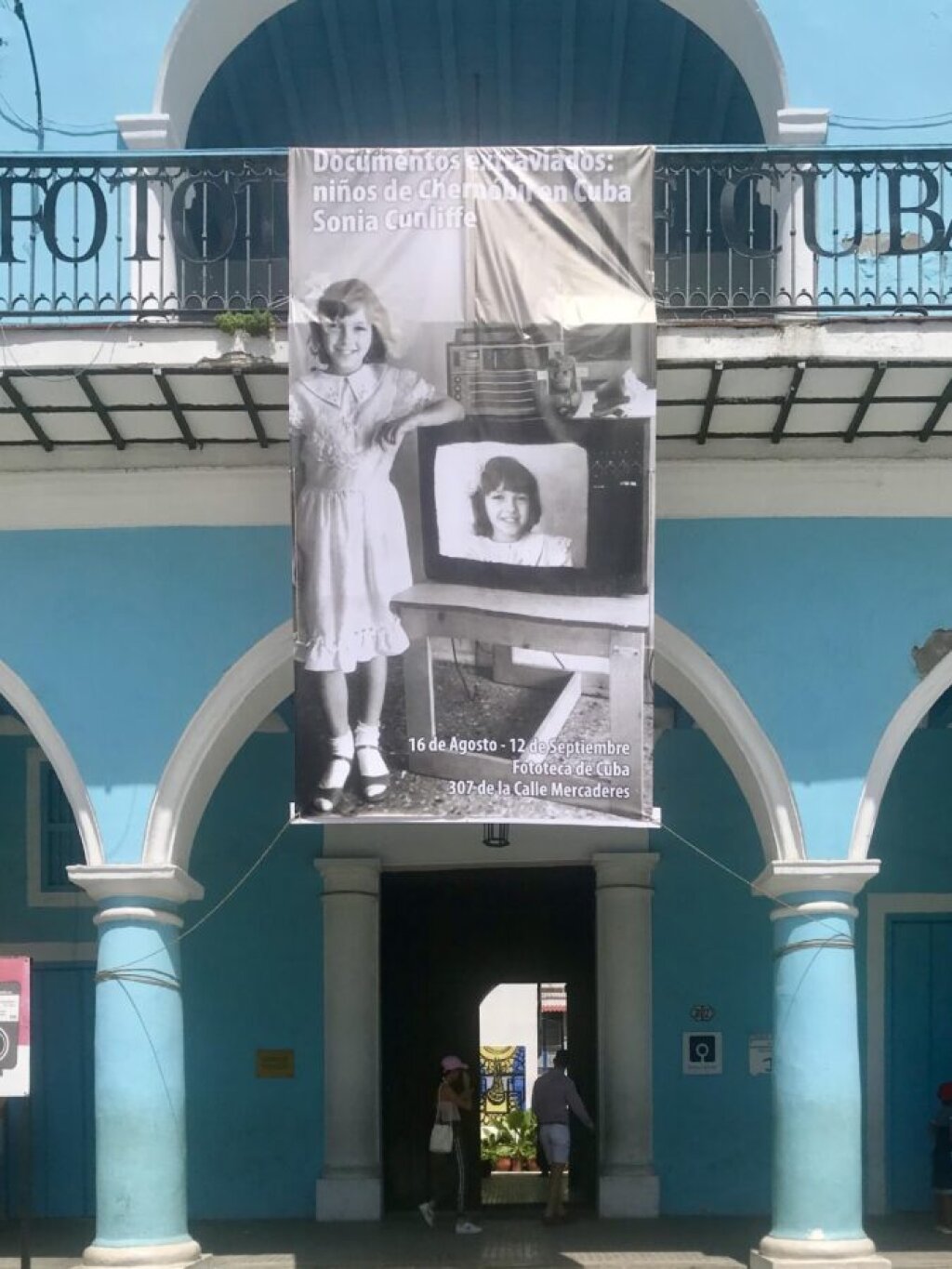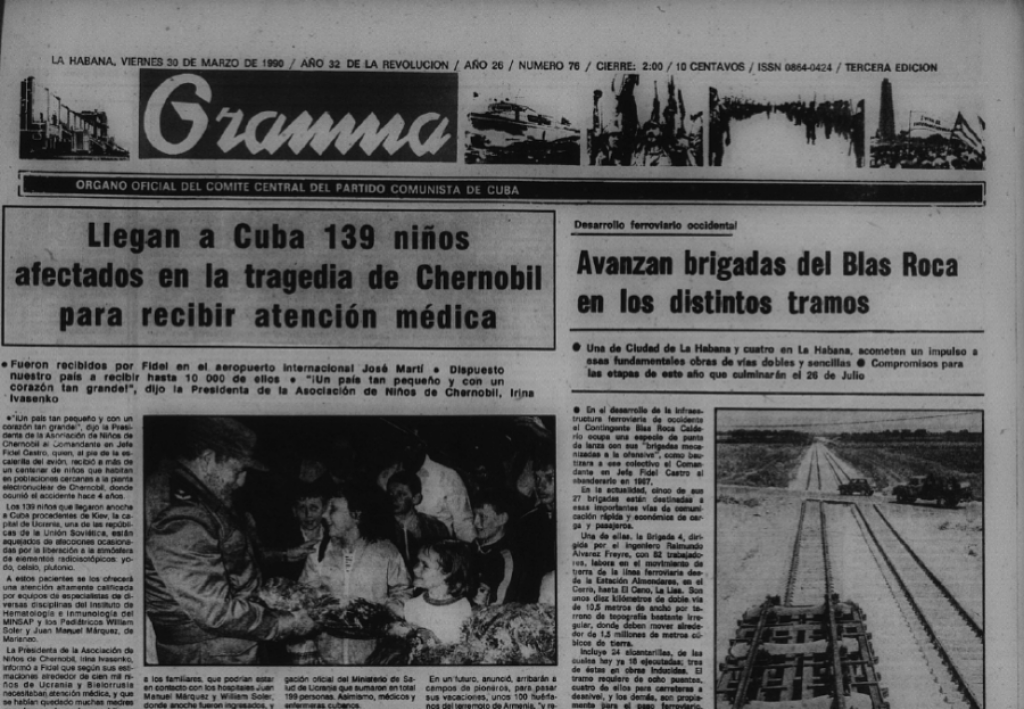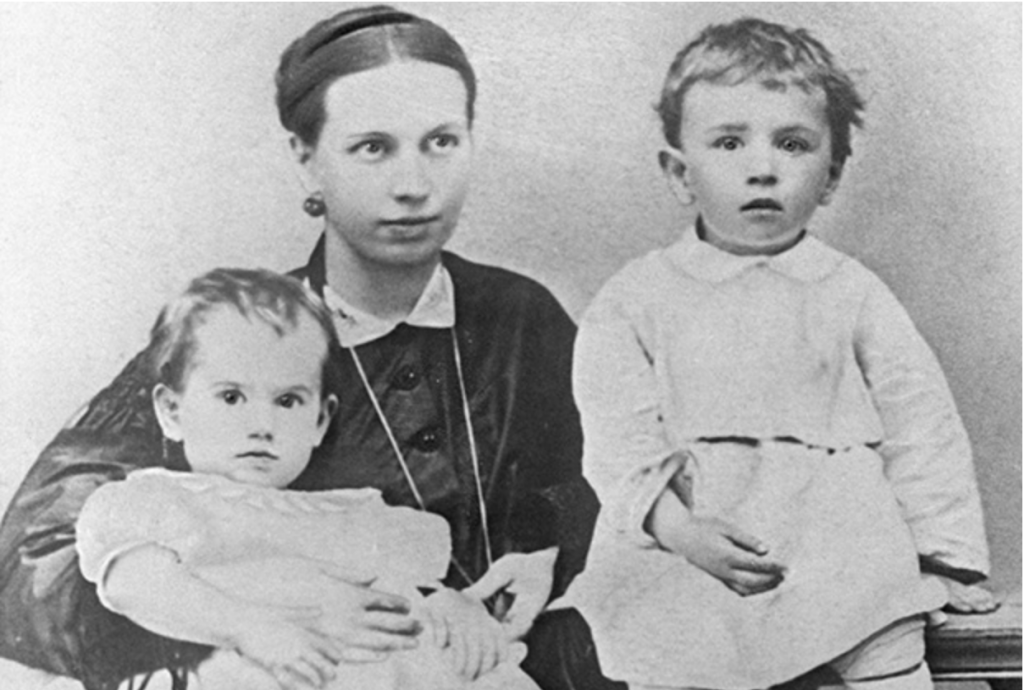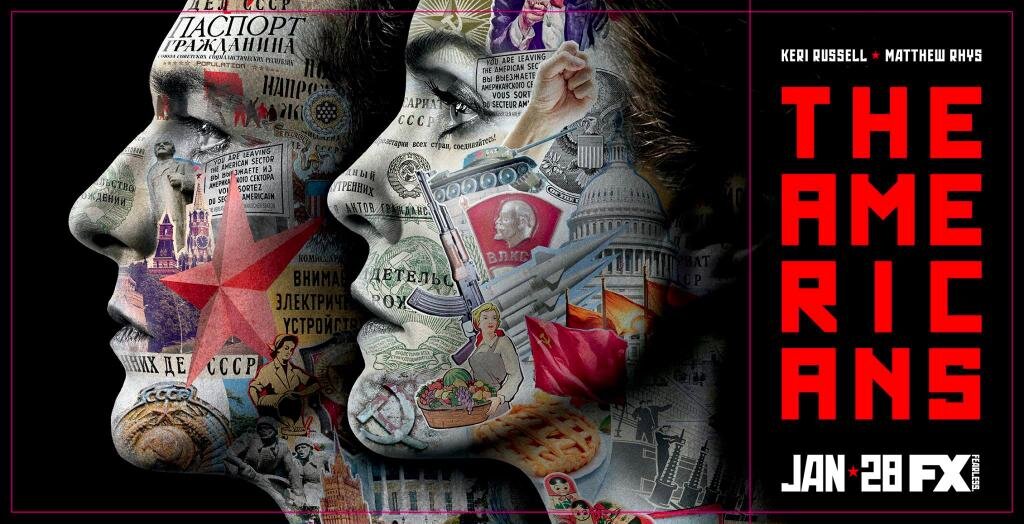This post features a runner-up entry in All the Russias' inaugural Graduate Student Essay Competition.
Isabelle DeSisto is completing a joint bachelor's degree in Government and master's degree in Regional Studies: Russia, Eastern Europe and Central Asia at Harvard University.
As a graduate student studying Soviet-Cuban relations, I thought I knew what to expect when I set off on a three-month research trip to Moscow and Havana last summer. My thesis focused on educational collaboration between the Soviet Union and Cuba, so I knew I would encounter many Russian-speaking Cubans. What I did not anticipate was that I would also be drawn in by the fascinating connection between Cuba and the Chernobyl nuclear disaster.
In May 2019, HBO released the five-part miniseries “Chernobyl,” which chronicles the 1986 disaster at the Chernobyl Nuclear Power Plant in Soviet Ukraine. The series quickly captured the attention of viewers across the globe. It vaulted to the No. 1 spot in the IMDb’s all-time rankings of top-rated TV shows and scooped up numerous awards at the 2019 Emmys.
I watched “Chernobyl” in June, balancing my laptop on the rickety kitchen table of my Moscow apartment. I had come to the Russian capital for a month to gather documents in the state archives for my master’s thesis on Soviet-Cuban educational exchange programs. After the archives closed for the day, I would often return to my apartment on the outskirts of the city to cook grechka (buckwheat; a staple in Russian cuisine) and catch up on the latest TV shows.
“Chernobyl” made a big impression on me. I had read Nobel laureate Svetlana Alexievich’s Voices from Chernobyl, a collection of oral histories that had in part inspired the miniseries. But seeing the heart-wrenching accounts of the disaster onscreen was an entirely different experience.
At the end of June, I packed my suitcases, said goodbye to some churlish Russian archivists, and hopped on a plane to Cuba. There, I dedicated July and August to interviewing Cuban diplomats and professionals who had studied in the Soviet Union.
While living in the Cuban capital of Havana, I noticed many examples of the Soviet legacy on the island. From ramshackle Lada cars to matryoshki (Russian nesting dolls) collecting dust on kitchen counters, remnants of the three decades of Soviet-Cuban collaboration were subtle but inescapable.
But that summer, the conversation was dominated by another Soviet-Cuban connection—Chernobyl. The HBO series had circulated across the island despite the U.S.-imposed economic blockade, as Cubans passed around copies on USB flash drives. Many of my interviewees had seen it.
At first, I did not understand why Chernobyl was such a hot topic in Cuba. One interviewee connected the dots for me. Not long after the accident, she explained, children from the disaster zone began to arrive en masse in Havana to receive medical treatment. Between 1990 and 2011, over 26,000 people—the vast majority Ukrainian children—had been treated, free of charge. The “Children of Chernobyl” program continued throughout the 1990s, even as Cuba suffered a devastating economic crisis after the Soviet collapse. In fact, Cuba’s medical aid to the victims of Chernobyl was the greatest of any country.
While the release of HBO’s “Chernobyl” revived the global debate about the world’s worst nuclear disaster, Cubans—and the Cuban government in particular—seized the opportunity to remember their own contribution to the cleanup effort.
During my summer in Havana, references to the “Children of Chernobyl” program abounded. The 2018 film Un Traductor (A Translator), which tells the story of a Cuban professor who worked as a translator for the Chernobyl patients, was screened in theaters across the island. The news outlet Cubadebate published a four-part investigative series about the program. Mesa Redonda, a popular talk show, aired a special episode featuring doctors who had treated Ukrainian patients.
On August 17, I attended the opening of an exhibition at Havana’s Fototeca gallery, titled “Documentos extraviados: niños de Chernóbil en Cuba” (“Lost documents: The children of Chernobyl in Cuba”). Sonia Cunliffe, a Peruvian artist, had created a display of photos and newspaper clippings, highlighting the stories of children who had come to Havana for treatment. The exhibition was first displayed in Lima in 2016 and Havana in 2017. Although nobody said so, I suspect that its 2019 encore was motivated by the “Chernobyl” TV series.
The stars of the exhibition opening were Sasha and Volodya, two Ukrainians who had received cancer treatment in Cuba as part of the “Children of Chernobyl” program. Both spoke fluent Spanish. When the organizers asked if Sasha’s wife would say a few words, all heads turned in my direction; I was the only blonde woman in the room. As it turned out, Sasha was married to a Cuban.
At the end of August, I returned to the U.S. armed with hundreds of Soviet documents and dozens of interviews under my belt for my thesis. But the story of the “Children of Chernobyl” program stuck with me. During the fall semester, I took a course at my university on Ukrainian history and wrote my final paper on the impact of the Chernobyl disaster in Cuba.
I spent the semester systematically analyzing articles published in Granma, the official newspaper of the Cuban communist party. I found that coverage of the “Children of Chernobyl” was extensive. In 1990, Granma published 19 articles about the program. Of the 25 articles published between 1990 and 1992, 48% appeared on the front page and 84% appeared on pages 1-3. 76% of articles were “above the fold,” revealing their importance in the eyes of the Cuban government.
The Chernobyl accident itself received far less coverage. Less than 50% of the articles written about the accident between 1986 and 1992 were printed on the first three pages of the newspaper.
Why this disparity?
In 1983—three years before the Chernobyl accident—Cuba had begun construction on its own nuclear power plant in the Cienfuegos province. Initially, the Soviet government suppressed information about the accident. But the global community quickly discovered its magnitude. The Cuban government, however, was hesitant to reveal the scope of the accident to its own population. If people knew what had happened at Chernobyl, they might oppose Cuba’s plans to build reactors in Cienfuegos. To the Cuban leadership, nuclear power was crucial to the island’s development.
After the collapse of the USSR, financing for the Cuban nuclear program dried up; the Cuban nuclear power plant was never finished. But the “Children of Chernobyl” program remained a priority.
Highlighting the “Children of Chernobyl” was beneficial to Cuba. It was both an admirable humanitarian gesture and an excellent propaganda tool. Not only was it a way to showcase the advanced Cuban healthcare system, but it also demonstrated that Cuba was not merely a Soviet satellite state. It was the Ukrainian Komsomol that had requested Cuban assistance. Thus, Cuba could provide medical treatment where the Soviets could not.
While HBO’s “Chernobyl” reminded people in most of the world about the disastrous consequences of the 1986 nuclear accident, in Cuba it rekindled a conversation about the “Children of Chernobyl” program, through which the Cuban government provided medical aid to 26,000 Chernobyl victims. The “Children of Chernobyl” was an impressive display of Cuban humanitarianism, but it was also a boon for propaganda. As I witnessed last summer, the program may have ended officially, but it has not outlived its usefulness.

